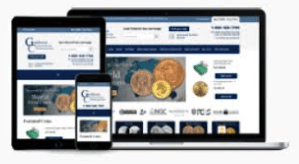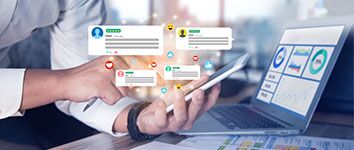I get frustrated when I see companies repeatedly making the same costly PR mistake. Worse: Instead of learning from it, they keep doing it because it appears to be working. They don’t realize they’re nearly always setting themselves up to lose business over the long term.
Your PR campaign is probably not failing!
The amount of data we now have available from websites, social media channels, ecommerce, etc. is making it difficult for marketers. It’s easy to get lulled by all this information.
Marketers falsely believe that if they use PR to get in front of 25,000 people who match their demographic profile … and they communicate via a problem/solution format how their product or service is part of a solution … there will be immediate sales. When there’s not a direct measurable response, most think the PR campaign is failing.
That’s when they make the biggest mistake of all: They pull back on their PR and focus on getting short-term sales surges. This tactic is nearly always doomed.
Please stop measuring success exclusively by quick sales
It’s human nature to want to shorten the distance between creating awareness about a product and getting the sale.
For example, when you have 500 ad campaigns running on Amazon, you may see a dramatic Return on Advertising in real time. Similarly, eblasts to customers as well as influencer podcasts can generate a big run on sales. Essentially, you’re buying customers. If you’re lucky enough for people to repurchase, you have the scale to start making money.
Here’s not what’s well understood. These sales are almost always coming from Innovators. Those are the buyers who jump on the ‘next big thing’. The problem? Because they thrive on what’s new, they have almost no brand loyalty. You’re not building a customer base. These sales are not sustainable.
Short-term sales surges should only be part of your efforts.
Awareness is the precursor to consistent sales
As someone who has arranged more than $50 million in earned publicity, primarily to the Healthy Chooser® market, I counsel clients to adjust their expectations about conversions from a publicity campaign.
Awareness transitions into sales. Appreciate the value of earned media, which is other people saying favorable things about your product in channels that reach your target market. With enough stories, you will see an increase in sales and traffic. Even better, these will be buyers who are strongly motivated to repurchase because they understand how your product will improve their lives.
Here are some things to consider:
- Awareness should be the largest line item in your marketing budget. Spend your dollars to generate awareness among the people you have the highest potential to serve, and in a market with the highest potential for growth.
- There’s always a cold start. This is true whether you’re an established company launching a new product, or a new company introducing your product to the marketplace. It’s like starting a cold engine on a winter’s day. You don’t just get in and go.
- Start where it makes the most sense. Uber started as a very simple app to manage limousine rentals in San Francisco. It wouldn’t have made much sense to generate awareness in another city unless they also had drivers in that location. Facebook started as a simple social app on the Harvard University campus. Once they built it in one market, it could be replicated in multiple markets. With publicity, the same sort of replication can happen. The media’s interest in your story will build as awareness builds.
- The breadth and depth of your investment in generating awareness will be much greater than you imagine. Marketers who have the luxury of working for large consumer products companies, and who have leadership well practiced at the awareness issue, don’t get tripped up by trying to find the sure thing. They’re not gambling on winning lottery tickets that generate quick and measurable returns.
- Everyone needs to see a return. The media require an investment into content offerings that are worthy of their coverage, without payment. This should be one of your campaign cornerstones. But it can’t be measured in the same way you’d measure direct response advertising. One way to know if you’ve reached an awareness threshold is when conversations with the media don’t always start with a basic explanation of your product or service. You’ve got to “sell yourself” to the media before they’ll “sell you” to their audiences.
- Earned media is one of the most difficult things to secure, and to secure consistently. This will never change. The bar for earning the media’s attention and their audiences’ interest continues to be raised. Those are the realities. Since this is a big investment, it’s smart to work with an agency experienced in generating media placements.
Three steps to creating a solid PR awareness campaign
- Understand the innovation adopter curve. The first buying surge will likely be from the Innovators. Next will come the Early Majority, Late Majority and finally the Laggards. Earning the awareness and trust of these last three groups will give you the sales volume and brand loyalty to establish your product. PR is the most expedient and efficient way to accomplish this because it educates large audiences, moving them into the sales cycle.
- Understand reach and frequency. You want to reach your target audience with messaging that will cause them to want to buy. Most people will need to hear your message at least seven times before they remember it. Arranging for multiple media stories saying nice things about your product will give you third party credibility. Repurposing those stories on your owned marketing channels will accomplish additional reach and frequency.
- Understand your position within the Product Life Cycle. If your product is in the Introductory or Growth Stages, your publicity should be focused on education and creating desire. Why should someone prefer your product versus your competition’s? If your product is in the Mature or Declining stages, awareness has already been established. Reminding people about its benefits should be your priority.
The marketing landscape continues to change. There are a lot of moving parts that simply didn’t exist even a few years ago. If you serve the Healthy Chooser market, call me at 952-607-5210 or complete this form for a free consultation. Let’s discuss the best ways to use your budget that will give you the right combination of both short-term and long-term returns.







